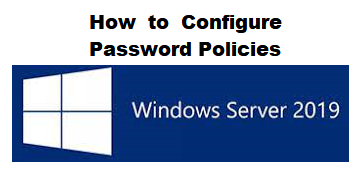Network Router protocols helps you to specify way routers communicate with each and other networks. It allows the network to select routes between any two or more nodes on a computer network.
Routing Protocols Types :
Three types of routing protocols
(1) Static Routing
(2) Dynamic Routing
(3) Default Routing
Static Routing Protocols
Static routing protocols in network administrator manually assigns path from source to destination network. It offers more security to the network. Static routing in maximum 16 router connection available.Static Routing Protocols used in smaller networks.
Default Routing Protocols
Default Routing Protocols in router configured to send all packets towards a single router. It does not matter to which network the packet belongs and it is forwarded out to router which is configured for default routing.
Default Routing Protocols used with stub routers and which has only one route to reach all other networks.
Dynamic Routing Protocols
Dynamic routing protocols in routers to add information to their routing tables from connected routers automatically. Dynamic routing protocol in unlimited router connection available.Dynamic Routing Protocols can be used in larger networks.
Dynamic Routing Protocols in two types :
(1) Interior Gateway Protocols (IGP) - IGPs include RIP, EIGRP, OSPF, and IS-IS.
(2) Exterior Gateway Protocols (EGP) - EGPs in only include BGP.
Classful routing protocols - RIPv1 and IGRP, are legacy protocols and are only used in older networks.
Classless routing protocols - RIPv2,OSPF,IS-IS,EIGRP and BGP used in classless routing protocols.
Distance Vector Routing Protocol (DVR)
Distance Vector Protocols advertise routing table to directly connected neighbor at a time intervals using lots of slow converge and bandwidths.
Distance Vector routing protocol in routing tables need to be updated with new information and always trusts routing information received from neighbor routers.
Distance Vector Protocols in covers 4 types of protocol -
(1) RIP1 (2) IGRP (3) RIP2 (4) EIGRP
Routing Information Protocol (RIP)
RIP is used in Local Area Network and Wide Area Networks. It's run on Application layer of the OSI model.
Two versions of RIP:-
(1) RIPv1
(2) RIPv2
RIPv1 helps you determine network paths based on the hop count journey and ip destination . RIPv1 is classfull routing protocol no other subnet mask supported.RIPv1 in broadcasting IP table to all routers connected with the network.
RIPv2 is a more sophisticated it sends its routing table on to a multicast address.
Interior Gateway Routing Protocol (IGRP)
IGRP is subtype of distance vector interior gateway protocol developed by CISCO.The metrics used are load balance, bandwidth, MTU, delay, and reliability. It is widely used by routers to exchange routing data within an autonomous system and broadcasts after every 90 seconds, and maximum hop count of 255.
IGRP is also widely used larger networks compared to RIP and it is resistant to routing loop because it updates itself automatically when route changes occur within the specific network.
Enhanced Interior Gateway Routing Protocol (EIGRP)
EIGRP is a hybrid routing protocol and its supported distance vector, and link state routing protocols. EIGRP acts as distance vector routing protocol as it learned routes from directly connected neighbors.
It will route the same protocols that IGRP routes using the same composite metrics as IGRP and widely used larger networks, which helps the network select the best path destination.
Link-State Routing Protocol -
Link State Protocols take a unique approach to search the best routing path and the backup routes. Link State Protocols in the route is calculated based speed of the path to the destination and the cost of resources.
Routing protocol Three tables:
Neighbor table - In this table contains information of neighbors router only. For ex - adjacency has been formed.
Topology table - In this table stores information of whole topology.
For ex - it contains both the best and backup routes to a particular advertised network.
Routing table - In this type of table contains all the best routes to the advertised network.
Link State Protocols in covers 2 types of protocol -
(1) OSPF (2) IS-IS
Open Shortest Path First (OSPF)
OSPF (Open Shortest Path First protocol) is a link state IGP tailor made for IP networks using the SPF (Shortest Path First) method. OSPF is very secure and authenticate protocol changes to keep data secure
OSPF routing allows you to maintain databases detailing information about the surrounding topology of the network. it also uses the Dijkstra algorithm and recalculate network paths when its topology changes.
Intermediate System to Intermediate System (IS-IS)
ISIS CISCO routing protocol is used on the Internet to send IP routing information. It consists of a range of components, including end systems, intermediate systems, domains and area.ISIS Protocol in routers are organized into groups called areas.
Path-Vector Routing Protocol -
A path vector routing protocol is a network routing protocol maintains path information gets updated dynamically and looped through the network and node are easily detected and discarded .
Path vector routing protocol in covers 1 types of protocol -
(1) BGP - Border Gateway Protocol
BGP is the last routing protocol of the Internet, which is classified as a PVP (path vector protocol).
This type of routing protocol sends updated router table data when changes are made.There is no auto-discovery of topology changes, which means that the user needs to configure BGP manually.
BGP is the routing protocol is supported across the Internet. It allows organizations known as autonomous systems to advertise and route traffic between each other.which offers several attributes to a route to help administrators provide additional information that can be used to route traffic.












0 Comments